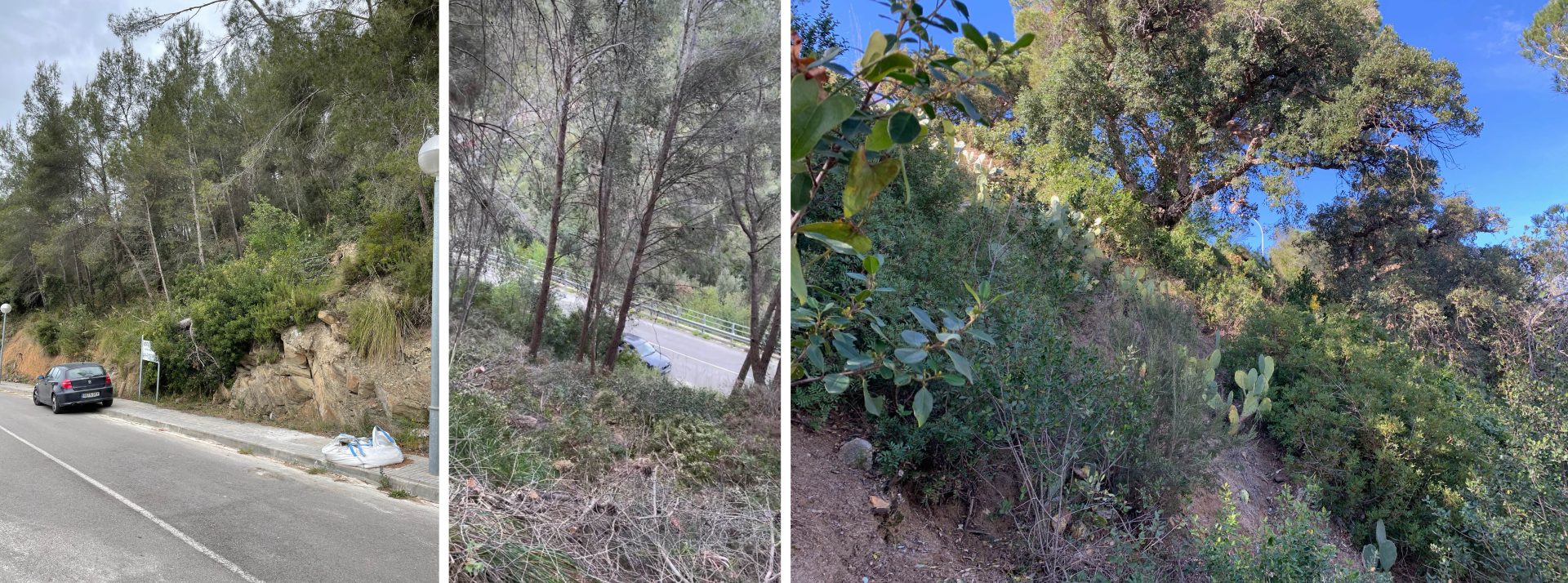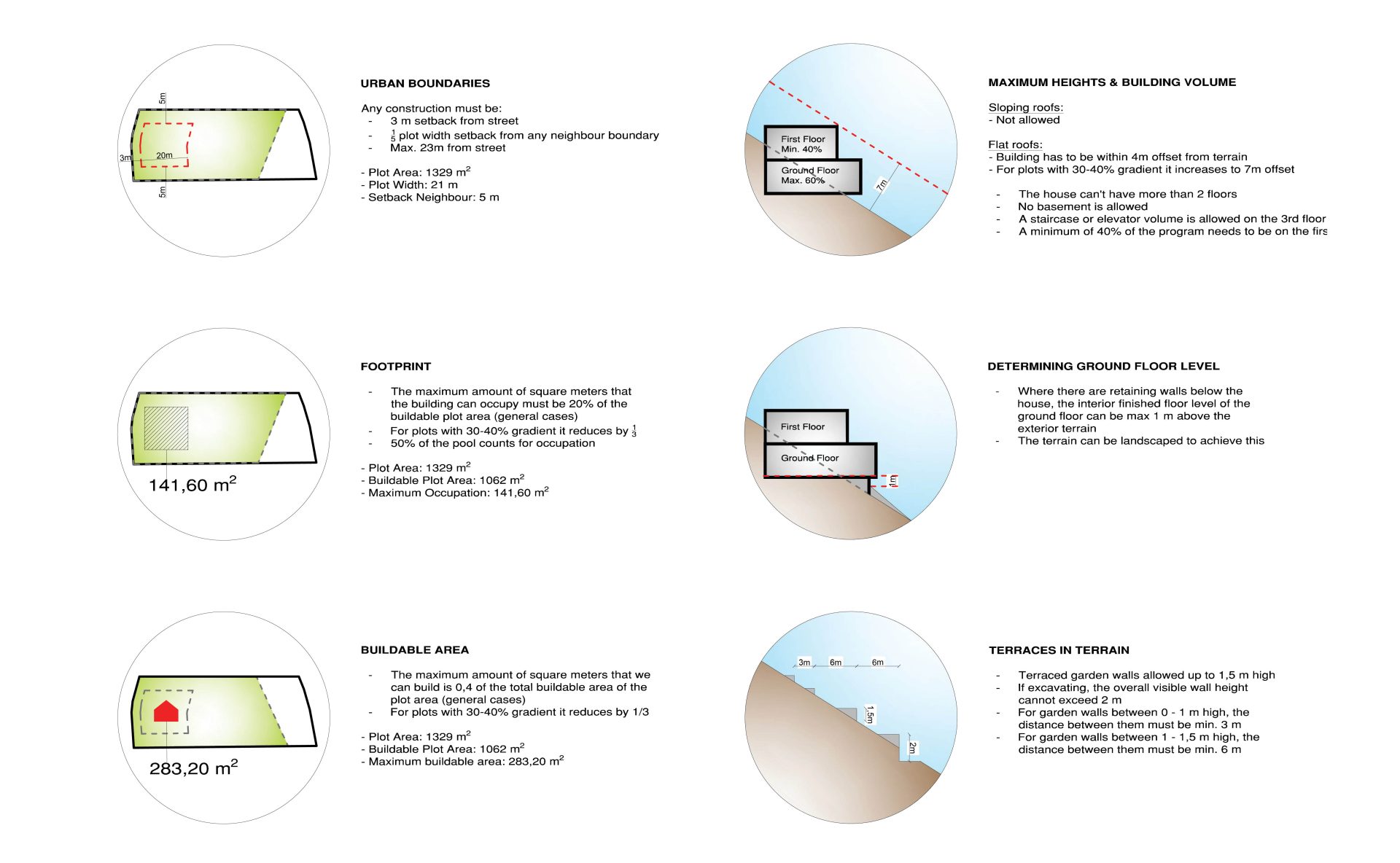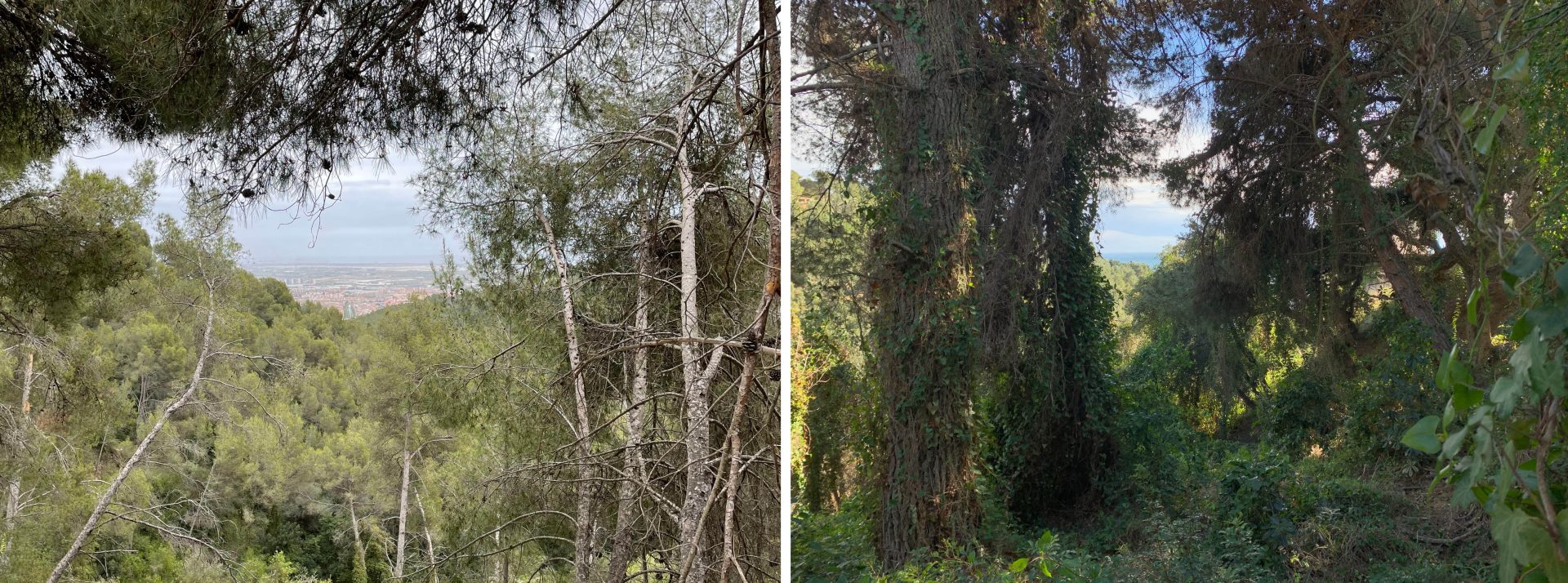The advantages of building on a slope
Sloping terrains can be very attractive and tempting. Building on a slope may bring the advantage of breathtaking views, privacy and being surrounded by nature. You may even consider a building that floats amongst the treetops, just like extravagant projects in magazines.
Of course, this is completely true. Building on a slope is exciting and presents a challenge in how to connect the building with the terrain. Often the most appealing answer is to have it float, rising above the vegetation to maximize views. Imagine large, open-plan living spaces with floor to ceiling glass opening out onto wrap-around terraces. Imagine inside-outside living that lures the surroundings right into the heart of your home. And of course a floating building may also have less impact on the terrain. This is because the construction techniques used involve cantilevers or thin columns with pile foundations at the base of each column.

If the site is just too steep, terracing the building is also a wonderful way to celebrate the slope. And it allows you a stronger connection with the garden. You can break the building up into various parts that sit at different levels on the terrain. This opens up the possibility of creating split levels with short runs of stairs connecting different areas, or dramatic double height spaces. As a result, landscape design becomes interesting and you can create unique garden and swimming pool areas.

Cost implications
There are endless ways to invent a fantastic design on any terrain. The main thing to keep in mind is that the steeper the terrain, the higher the cost of construction.
Clients often come to us excited as they have just bought a delightful plot of land with exceptional sea views and no neighbours. And they’ve paid what they thought was a very reasonable price. Unfortunately, there is no such thing as a free lunch. There are no neighbours, probably because nobody wants to buy those plots. This is because they come with many complications. Although these complications can usually be resolved, they come at a cost. And this cost pushes construction costs up. In the end the steep plot will prove more costly than a flatter one that with a higher sale price.
The problems of building on a slope
Accessibility
One of the main issues with building on a slope is how to get around the plot. The contractor needs to deliver materials to the site and the workers need to transport these to the right place. When there is only one access road, they will devise make-shift stairs and scaffolding. Although this resolves the problem, it makes the construction more expensive.

Installations
Level differences usually mean pumps are needed and depending on where the water / electricity / waste is going and coming from, it can get pricey. In some cases the plots are also cheap because they are not connected to municipal connections. This means there will be additional costs for the installation of a well and a septic tanks.
Expensive foundations
On flat sites, foundations will be set at approximately the same level for the entire building. As a result, the floor slabs will also be at the same level. As a result, relatively little excavation is needed for the foundations. On steep slopes, on the other hand, there are two options: building on stilts or excavating to use a ‘cut and fill’ option. Which option makes more sense has everything to do with the cost of excavation.
In any case, a detailed survey of the terrain needs to be done. Using perforations in various places on the terrain allows establishing the exact composition and the level of firm, compact ground. If there is a lot of rock, the cost of excavation will be high and building on stilts makes sense. If the ground is made of a softer stone, it may be possible to excavate for a “cut and fill” solution.
Building on stilts
If the geotechnical study has indicated that the ground is made of hard rock, building on stilts may be the obvious solution. Excavating rock is prohibitively expensive so this is usually the cheaper option of the two. Unfortunately this often makes people think that floating your building is cheap. This is a misconception. Yes, if the ground is hard rock, building on stilts may be cheaper than the cut and fill option. But it is still more expensive than building on flat land.
Excavation: ‘Cut and fill’
The other possible option of building on a slope involves creating leveled areas on the terrain to build on. This results in a terraced building distributed over the slope. To create these levels, one needs to excavate large areas of the terrain and/or fill sections. Retaining walls will be necessary. This process is usually expensive as there is a lot of excavation and terrain adjustment. If the terrain consists of hard rock, it may be prohibitive.

Local regulations
Something very important to note is that each municipality and province in Spain has its own set of rules. Sometimes local regulations state that the building cannot be on stilts and has to be terraced. These rules can be as severe as insisting the exact position of the interior floor level of the ground floor. And unfortunately such rules may result in excavation. Height restrictions are another issue. There are municipalities that insist that the height cannot exceed 7m at any point along the slope.
If the gradient is more than 30%, the regulations become even more restrictive. In many cases there are additional restrictions on the allowable footprint and buildable area when building on a slope. If the gradient is above 40%, no construction may be possible at all. Therefore the local regulations need to be analysed in detail to understand what is possible on the site.
The diagrams below show some examples of regulations for a steep site in Spain. Please note that these change based on the local regulations and may not apply to your specific terrain.

Next steps
Do you have a plot on a slope and want to understands what is possible to build there? At ZEST Architecture we offer you the option of an in-depth Feasibility Study. This includes a site visit, rigorous analysis of the regulations, a meeting with the town architect to discuss specific regulatory issues affecting your project, development of a first potential concept for volume & layout, conceptual budget breakdown and overview of other costs involved in the build, a preliminary timeline for design and construction and other essential things to help you understand if and how you can build on your site.
If you are interested and have questions, please get in touch: info@zestarchitecture.com

